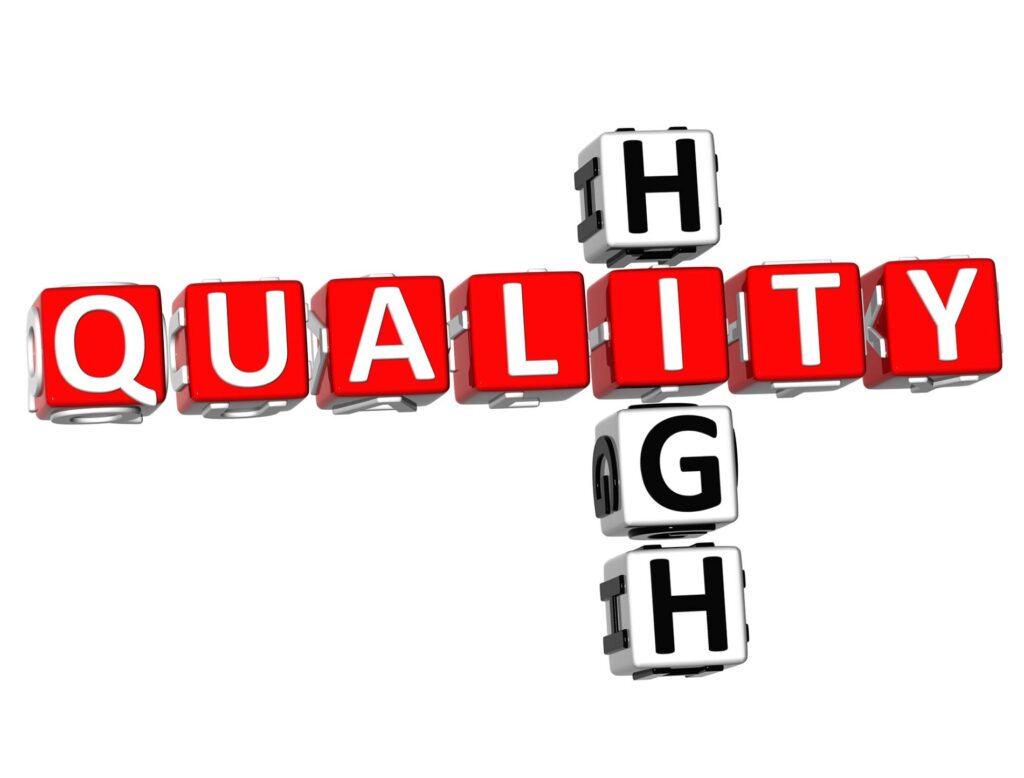
My Goal
In this post, my goal is to show that a do-it-yourself (DIY) investor can acquire the skills to build an awesome dividend stock portfolio that will provide a strong, sustainable yield and dividend growth above the inflation rate. Yes, the investor does have to learn how to select the right companies for their portfolio, know when to buy them and then have the patience to let them grow their earnings and dividends. Knowledge is empowering, so let’s get started!
Think Long Term Like a Hockey General Manager Starting a Rebuild
Building an awesome stock portfolio does take time and effort. In many ways, the job is similar to what a General Manager (GM) of a hockey team does during a rebuild. There are no shortcuts on the road to success in the NHL unless you get lucky and draft a generational talent like Wayne Gretzky or Mario Lemieux. The same thing is true in investing!
Most hockey GM’s will arrive at a point in time where they realize that their team has passed their prime; more than a simple fix is needed to address the problems. At that point, the GM must make a conscious decision to begin a rebuild and get approval from the owner. The first step is to recognize the need for change.
Inexperienced investors have knowledge gaps that may not be obvious during a bull market. When a recession hits, the weaknesses in the investment strategy are usually revealed. In other cases, there may be nothing wrong with the strategy employed, but it may not be compatible with the investor’s temperament. In both situations, the investor must commit to changing their investing process. Does this sound similar to a hockey GM entering into a rebuild?
Review your Stock Portfolio
There is an accepted process to successfully rebuild a professional hockey team. First, the GM begins to trade established players for less talented players; the compensation the GM receives is future draft picks. The GM uses the picks to draft a team of talented young players over a 3-5 year period. Most importantly, the GM and owner must remain patient while the young players develop. Finally, the process ends when the GM trades future draft picks for established players to fill the remaining holes in the lineup. This final step makes the team truly competitive again. So, what does this have to do with investing?
The investor needs to develop a “rebuild plan” that will identify the deficiencies in their existing stock portfolio and provide a prescription for remedying the situation. This takes a fair amount of self-reflection to identify the root causes of the problems. The answer is usually found by looking in the mirror.
Personal finance is truly personal – the best portfolio for you depends on your temperament. Each investor needs to assess their risk tolerance and develop an equity portfolio that allows them to faithfully follow their investment process through raging bull markets and painful bear markets. Bull markets often tempt the conservative investor to throw caution to the wind and seek quick profits. On the other hand, bear markets get uncommitted investors to throw in the towel.
A few years ago, I identified the need to upgrade my stock portfolio for my retirement years. The first step was to review all of my existing stock positions. I started by sorting the stocks based on the Chowder Number. I grouped each of the stocks that met my initial Chowder Number threshold of 10 into a spreadsheet by sector so I could clearly identify what sectors would be underrepresented in my rebuilt portfolio. (I discussed the importance of having a diversified stock portfolio in a previous post.) I also evaluated my mix between high yield and high growth stocks. My analysis revealed that I did not have enough dividend growth in my portfolio.
Based on my review, I ended up keeping roughly half of my stock positions, although they represented significantly more than half of the portfolio value. I sold many of my smaller positions that I decided were not worthy of additional investment.
Develop Your “Rebuild Plan”
A stock portfolio, much like a hockey team, should offer a balance between offence and defence. Many advisors recommend that younger investors put together a stock portfolio with offensive characteristics and then shift towards a more defensive posture as they approach retirement age. This advice assumes that the young investor can tolerate the volatility in portfolio value associated with a pure growth portfolio. However, investing data shows that many investors are not able to handle the downward price volatility that occurs during a recession. Investors can reduce volatility by selecting high-quality stocks, as well as by having an appropriate balance between offensive/defensive stocks in their portfolio.
In my previous post, I talked about the Chowder number, which is the sum of the current dividend yield and the expected dividend growth rate. Investors can think of the current dividend yield and the dividend growth rate as the defensive and offensive attributes of a stock, respectively. Of course, this only works for high-quality companies that have a sustainable dividend policy. I will have more to say about this in an upcoming post.
Defensive dividend stocks in Canada typically offer a yield above 4%. They also need to grow their dividend by more than the inflation rate over a complete business cycle to be of interest. Some of the defensive stocks that I own include utilities (Fortis and Emera), pipelines (Enbridge and TC Energy) and a telecommunication company (Telus). Note that these companies have limited competition and provide services needed by virtually everyone.
Many investors believe financial companies fit into the defensive stock category. My feeling is that they do not offer the same defensive attributes as the aforementioned stocks. Banks lend money out to individuals and companies. They can suffer significant loan losses during recessions and their investments may decrease in value. Likewise, the major Canadian insurance companies can experience underwriting losses. That being said, owning shares in the best Canadian banks and insurance companies (I own Royal Bank, TD Bank, Sun Life Financial and Power Corporation) has proven to be a wise investment over the long term, despite the occasional hiccup.
Offensive dividend growth stocks generally offer yields below 2%, but significantly higher dividend growth rates than defensive stocks. I own shares in two Canadian, fast-growing, consumer staple companies (Alimentation Couche-Tard and Metro). The two major Canadian railroads (Canadian National Railway and Canadian Pacific Railway) have dividend yields under 2% but have delivered a solid 10% dividend CAGR over the past decade. Toromont Industries, the Caterpillar equipment dealer in eastern Canada, is another example of a company with a stellar dividend growth record.
Lastly, there are companies that have both offensive and defensive attributes. They offer dividends in the 2-4% range combined with solid dividend growth. Canadian Tire is a retailer in my portfolio that fits into this category. Magna International is a Tier 1 automotive parts supplier that offers a moderate dividend yield and solid dividend growth. These stocks are sometimes overlooked by investors because they don’t offer a high initial yield or a spectacular dividend growth rate. Sometimes, this provides astute investors with opportunities to pick up these high-quality companies at attractive prices.
Identify the Companies You Want to Own
Although I am a strong believer that personal finance is “personal,” there are perhaps a dozen companies that Canadian investors should own as their “core” holdings. These companies have strong competitive advantages and often operate as oligopolies in the Canadian marketplace. The companies generally have predictable earnings and generate a lot of free cash flow that they can use to maintain their competitive advantage, pay growing dividends and buyback shares. This makes the stocks relatively easy to value using a discounted cash flow or dividend analysis, as I discussed in a recent post.
There are a couple of reasons why I categorize my stock holdings by industry sectors even though better diversification would be achieved by only owning one stock from each industry group. The first reason is that it takes effort to understand each industry group. Thus, there is a tradeoff between the additional time required to do this and the diversification benefit. The second reason is that I want to have a portfolio weighting above 5% in certain industries that I believe are essential to our economy. For example, I own more than one electric utility, pipeline and bank, which helps me to limit my “company specific” risk.
I often hear about investors who own all six of Canada’s major banks. It goes without saying that it is impossible to outperform the banking sector by doing this, and it takes significantly more time to follow all six banks. The stock prices of the Canadian banks are highly correlated with one another because they share many of the same risks. Over the long term, the stronger banks (historically Royal Bank, TD Bank and National Bank) have delivered superior operating performance. Choosing to own the weaker banks will likely decrease your portfolio performance over the long term without reducing overall portfolio risk.
The investor that owns too many banks would have a more diversified portfolio by buying shares in a bank, an insurance company, an investment management firm and a credit services firm. The reason why you want to do this is because every industry group has its own characteristics and business cycle. This means that there will be less volatility in your financial sector holdings, and the stocks are more likely to provide buying opportunities at different times.
What am I Planning to Add to my Portfolio
No investor will ever have the perfect portfolio and I am no exception. My personal objective is to increase the quality of my stock holdings over time, while maintaining a fairly concentrated portfolio of 20-25 stocks. I define a full stock position as 4-5% of my total stock allocation.
I plan to use the current stock market correction to take a position in one of the two major Canadian railroads (Canadian National Railway or Canadian Pacific Railway). These railroads have strong defensive characteristics due to their duopoly in coast-to-coast-to-coast rail transportation services. They both offer strong dividend growth characteristics. I sincerely regret not purchasing shares in Canadian National Railway in March 2020; the stock was on my watchlist at the time.
I tend to build up my stock holdings over a period of six months or more. This gives me a chance to closely observe the company before taking a full position. I view this as a prudent risk management strategy. I currently have several partial stock positions and will add to each of these positions when they hit the right price.
Concluding Remarks
The current recession has likely revealed weaknesses in many investors’ portfolios. The first step is to identify the weak links in your portfolio, figure out where you went wrong and use the knowledge to improve your investing process. A recession offers an excellent opportunity to see how your companies perform when times are tough. Investors need to develop a plan to replace their weaker companies with stronger companies. Sometimes it is best to sell your losers right away, while other times it is best to hold them until their price recovers from panic selling.
Although I am a strong believer that personal finance is “personal,” there are perhaps a dozen companies that most Canadian investors should own as “core” holdings. These companies have strong competitive advantages and often operate as oligopolies in the Canadian marketplace. The companies generally have predictable earnings and generate a lot of free cash flow that they can use to maintain their competitive advantage, pay growing dividends and buyback shares. Many of the Canadian companies I hold in high regard are mentioned in this article, but there are others. Use the harvested cash from selling your weaker companies to buy higher-quality companies near the end of the recession when they are selling at attractive valuations.
Hockey GM’s follow a well-defined process after they commit to rebuilding their hockey team. Similarly, an investor has to be able to identify when their stock portfolio is not performing well and commit to a plan to improve it. An investor that learns from their mistakes and follows the process I have outlined above will eventually own an awesome dividend portfolio that produces an attractive yield with solid and sustainable growth characteristics. Good luck, fellow investors!

